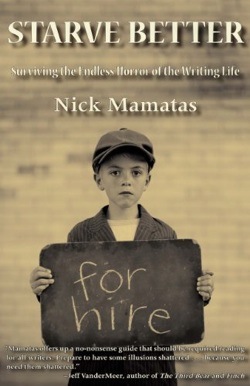Burn through the Words is a series of posts suggesting strategies you can use to hit your writing goals. Feel free to use, abuse, or disregard entirely; writing is a strange and personal beast and all advice herein should be taken on the rocks with a nice rim of salt.
 Stephen King taught me this one. Not personally. Lord, I wish. It’s in his book On Writing, and it’s something every writer should practice.
Stephen King taught me this one. Not personally. Lord, I wish. It’s in his book On Writing, and it’s something every writer should practice.
You. Are ready. To write. You’ve got your lucky Pickard/Spock mug full of steaming hot caffeine, your bedroom/office/basement door locked, and your document open, cursor blinking away. You sit down in the chair, pound out a paragraph, and then — you hit a snag. Maybe it’s some scientific theorem you aren’t clear on but wanted to use. Maybe you don’t know the name of a city, even though it’s your imaginary city on your imaginary world, because you straight just haven’t made it up yet. Maybe you want to mention the smell of a specific, real world plant. Whatever. Whatever you do, don’t go off on a Wikipedia wormhole.
JUST CAPS IT.
Write, “the air was redolent of PLANT SMELL” and move on. Later, after you’ve hit your goals for the day and are mindlessly half-watching Sherlock for the umpteenth time while simultaneously browsing the internet, that is the time to spend 45 minutes figuring out if it was tulips or tuberose wafting through the air. Not while you are in the hot seat. Never while you are in the hot seat. And, because you put that PLANT SMELL or THEOREM or CITY in CAPS, it will be darn easy to find again, and plug in what you meant all along.
JUST. CAPS. IT. And hit those daily word counts!


 Ah, writing books. With a few exceptions, authors of said books like to hold you gently by the hand and lead you down the path of writing philosophies, rules (which, as they say, can always be broken if you know what you’re doing), and sometimes exercises. Some go so far as to repeat aphorisms and affirmations.
Ah, writing books. With a few exceptions, authors of said books like to hold you gently by the hand and lead you down the path of writing philosophies, rules (which, as they say, can always be broken if you know what you’re doing), and sometimes exercises. Some go so far as to repeat aphorisms and affirmations.  I admit it: I used to not see the point of outlining a story, much less a novel. Shouldn’t real writers leap full into the fray with teeth bared, ready to shred writer’s block into little bloody shreds?
I admit it: I used to not see the point of outlining a story, much less a novel. Shouldn’t real writers leap full into the fray with teeth bared, ready to shred writer’s block into little bloody shreds? 